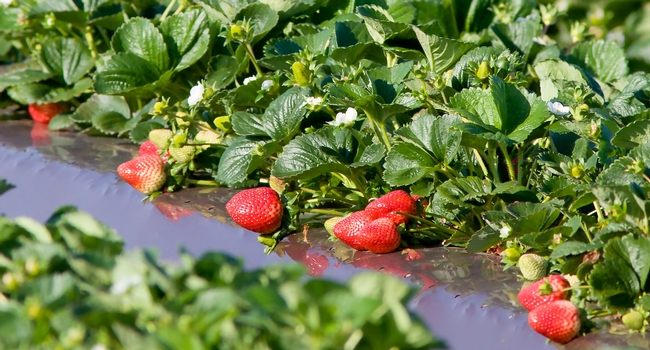Posts Tagged: coronavirus
A Tiger in Your Garden
The "Tiger King" has nothing on the Western Tiger Swallowtail. The colorful yellow and black butterfly, Papilio rutulus, reigns supreme. We saw this...
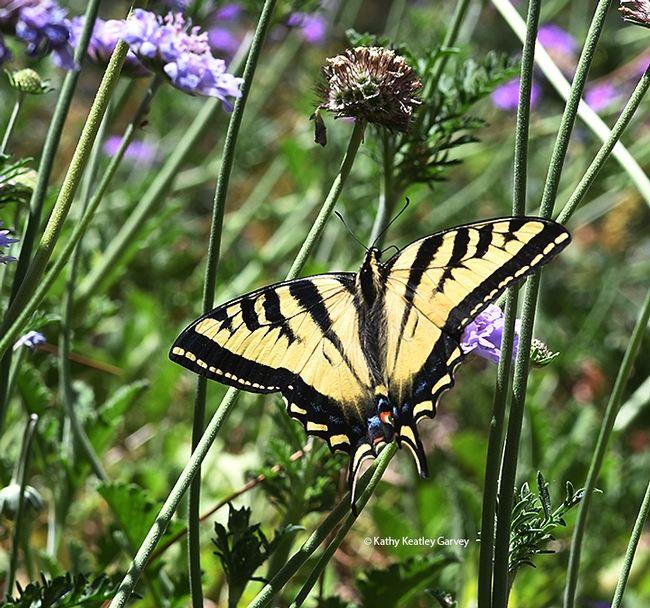
A screen shot of the Tree of Life-UC Davis YouTube program with host Joel Ledford (left) of the UC Davis Department of Plant Biology and Jason Bond of the UC Davis Department of Entomology and Nematology.
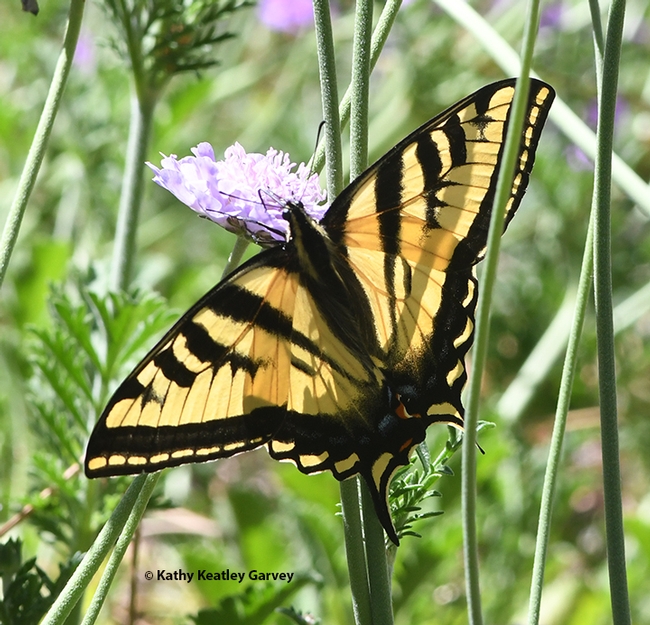
The majestic Western Tiger Swallowtail spreads its wings. (Photo by Kathy Keatley Garvey)
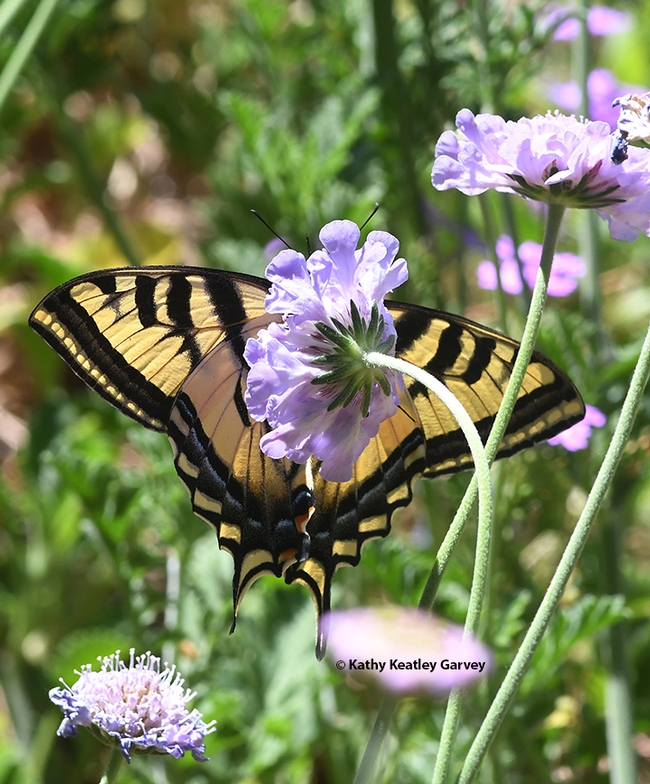
Another view of the majestic Western Tiger Swallowtail in the Ruth Storer Garden, UC Davis Arboretum and Public Garden. (Photo by Kathy Keatley Garvey)
COVID-19 Webinar to Include UC Davis Professor's Scientific Modeling Expertise
COVID-19 is not to be taken lightly, says James R. Carey, UC Davis distinguished professor of entomology, who will share his scientific modeling...
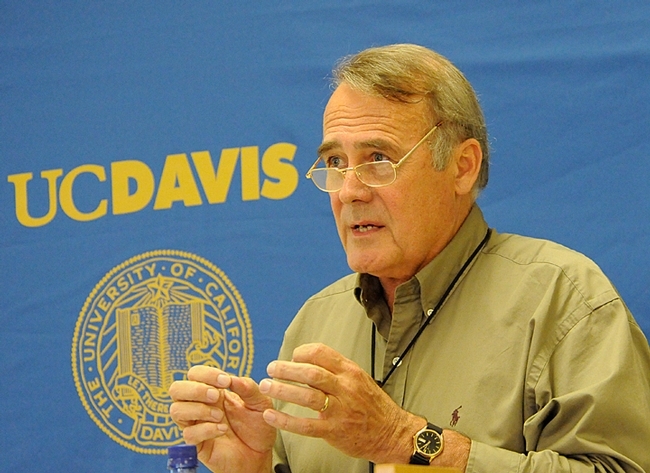
UC Davis distinguished professor James R. Carey of the Department of Entomology and Nematology, will share his expertise on scientific modeling at the COVID-19 webinar. (Photo by Kathy Keatley Garvey)
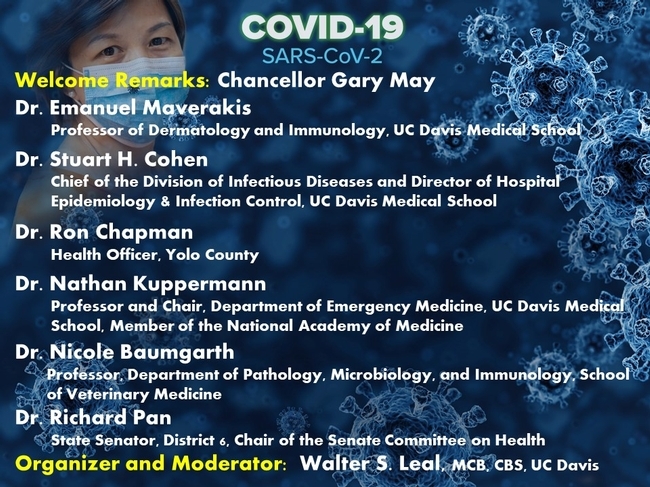
Partial list of speakers for the COVID-19 webinar.
Public Service Project Targeting Coronavirus Pandemic
So many good-hearted people are trying to help others during the coronavirus pandemic. Take professional seamstress and aerobics instructor Teresa...
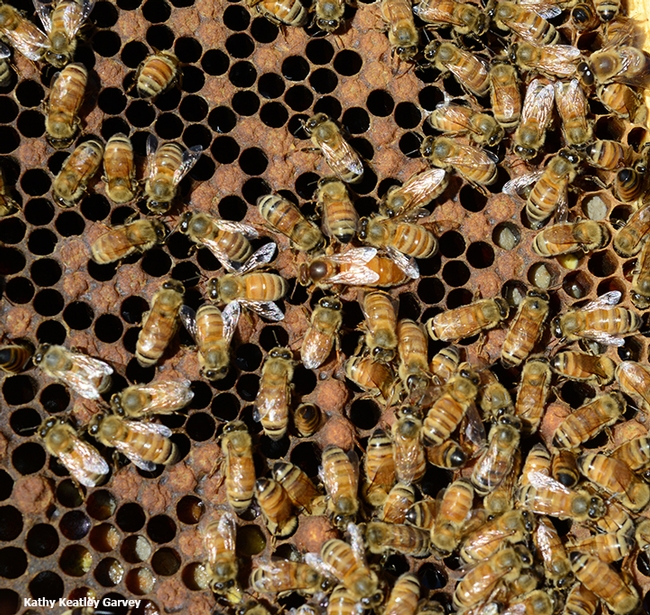
Honey bees cluster on a frame at UC Davis. (Photo by Kathy Keatley Garvey)
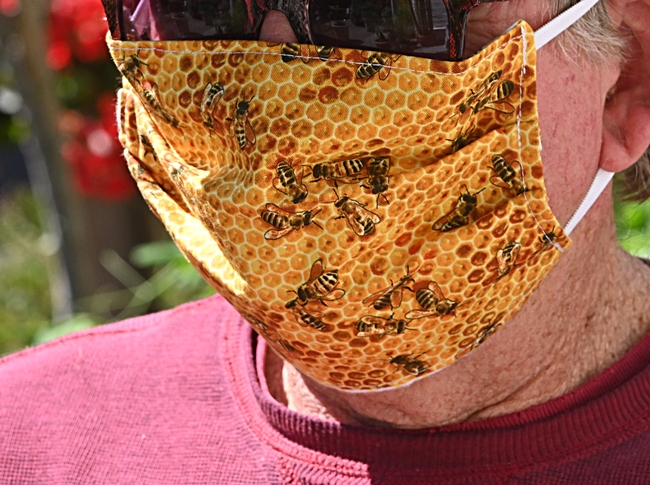
Honey bees cluster on a mask, the work of Teresa Hickman. (Photo by Kathy Keatley Garvey)
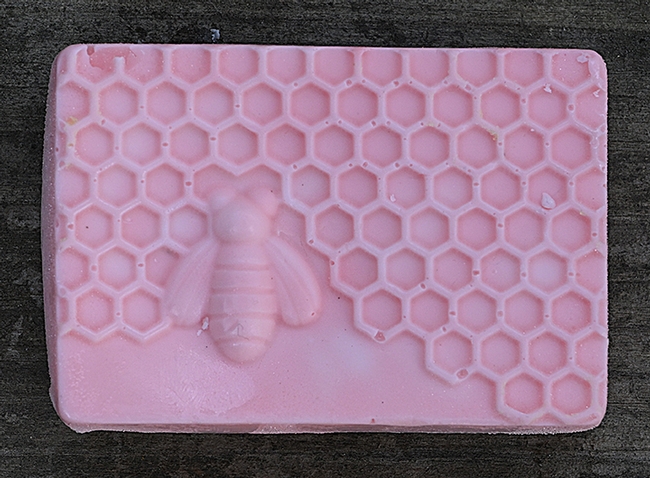
A honey bee motif on a hand-made bar of soap, the work of Teresa Hickman. (Photo by Kathy Keatley Garvey)
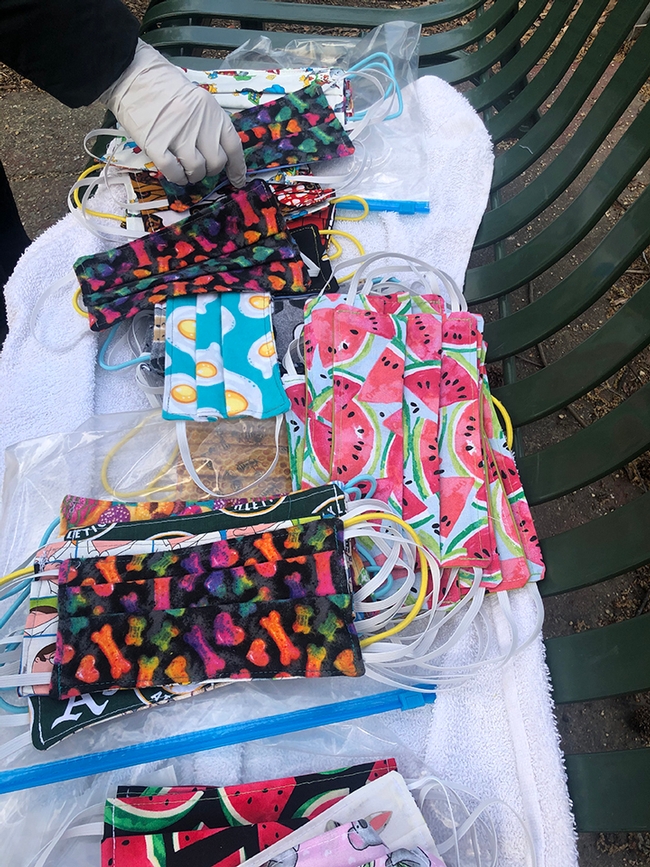
A gloved hand reaches for one of the many masks made by Teresa Hickman. (Photo by Kathy Keatley Garvey)
Coronavirus in humans and livestock
Coronaviruses in human and animal health Gabriele Maier, CE Specialist for Beef Cattle Herd Health and Production March 30, 2020 Now that we are...
COVID-19 not a current threat to the food system, but California farmers still feel the pinch
COVID-19 does not currently pose major threats to overall global food security because adequate stores of staples — like wheat and rice — remain available. But the sustainability of California specialty crops may face greater hurdles, reported Laura Poppick in Scientific American.
Poppick spoke with two UC Agriculture and Natural Resources (UC ANR) scientists for perspective on the future of California agriculture considering the market and production constraints posed by measures to slow the spread of the coronavirus.
“Everybody is scrambling to figure out what to do,” said Gail Feenstra, deputy director of UC ANR's Sustainable Agriculture Research and Education Program. “There's just a lot of disruption.”
Specialty products — such as some fruits and organic produce grown on smaller-scale farms — are often sold to restaurants and farmers markets, many of which are now closed or have reduced service, rather than directly to the grocery stores that are still operating. Even if these farmers are able to continue working, they may have limited places to sell their goods, the article said.
Strawberries are another crop likely to be affected. Laborers picking strawberries typically work more closely than is advisable to prevent the spread of the virus, said Mark Bolda, a University of California Cooperative Extension farm advisor based in Watsonville. He said farmers are already making plans to spread workers between rows.
Strawberries, however, hit prime ripeness within a narrow window of just two to three days and must be picked quickly, Bolda says. Spacing workers may slow picking, and, "being slower is expensive."


